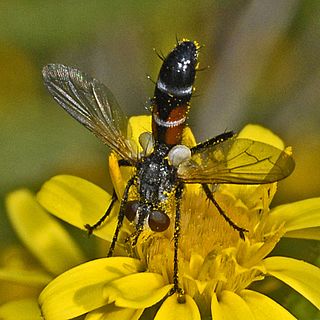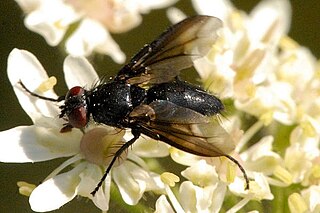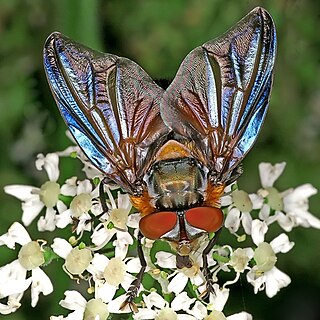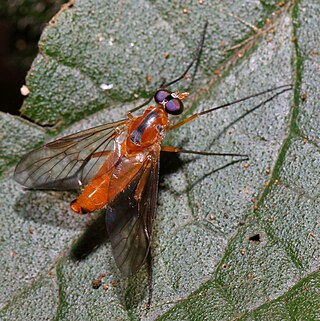
Cylindromyia is a genus of flies in the family Tachinidae.
Eophyllophila is a genus of flies in the family Tachinidae.
Austrophorocera is a genus of flies in the family Tachinidae.

Exorista is a genus of flies in the family Tachinidae.
Phorocerosoma is a genus of flies in the family Tachinidae.
Prodegeeria is a genus of flies in the family Tachinidae.

Prosena is a genus of flies in the family Tachinidae.
Senometopia is a genus of flies in the family Tachinidae.

Dexia is a genus of flies in the family Tachinidae. Most larvae are parasitoids of beetles (Scarabaeidae).

Voriini is a tribe of flies in the family Tachinidae. More junior homonyms exist of Wagneria than any other animal genus name.

Dexiinae is a subfamily of flies in the family Tachinidae.

Eryciini is a tribe of flies in the family Tachinidae.

Phasiinae is a subfamily of flies in the family Tachinidae. Except for the small tribe Strongygastrini members of this subfamily attack only Heteroptera.

Tachininae is a subfamily of flies in the family Tachinidae.

Brachyanax is a genus of bee fly in the subfamily Anthracinae. It was circumscribed by Neal Evenhuis in 1981. Thirteen species are recognized, and they are found in Asia and Australasia.
Syritta orientalis is a species of syrphid fly in the family Syrphidae.
Indonesicesa is a genus of flies in the family Neriidae.

Suragina is a genus of flies in the family Athericidae.
Nigritomyia is a genus of flies in the family Stratiomyidae.
Gabaza is a genus of flies in the family Stratiomyidae.









